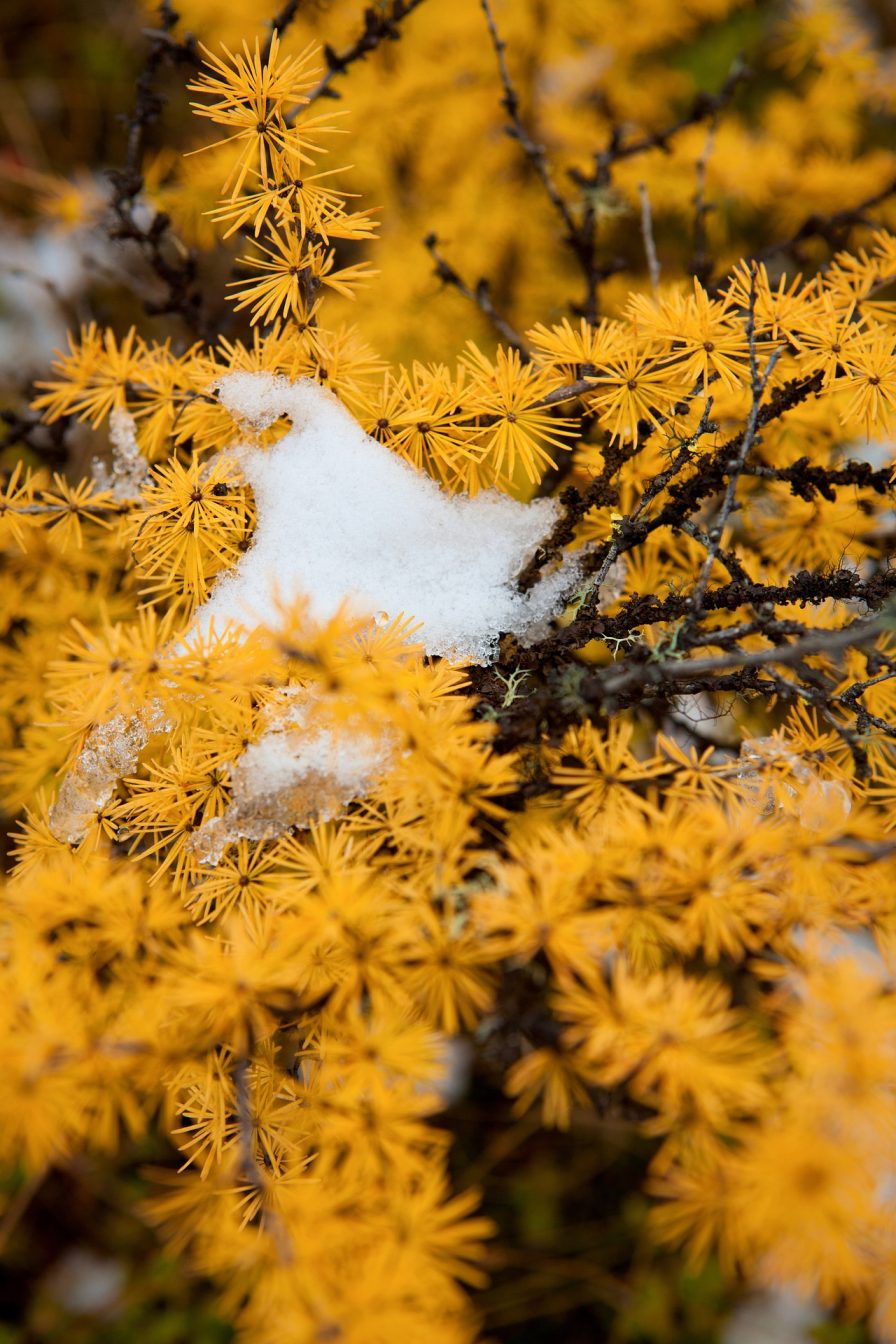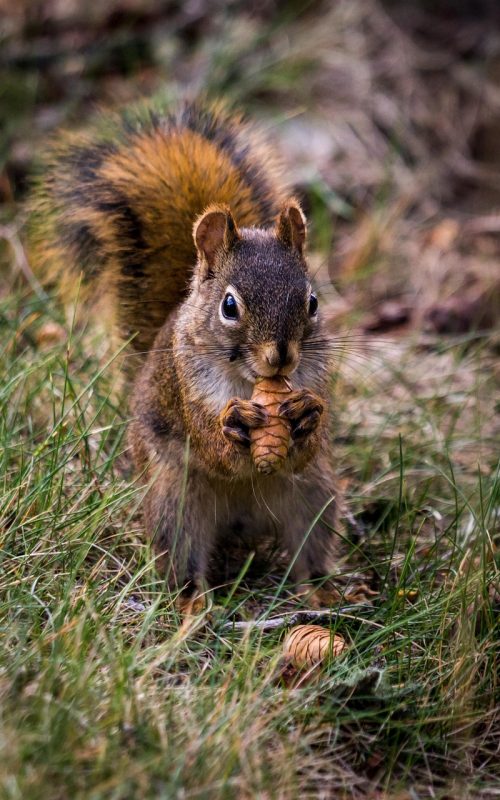Take a walk outdoors this fall!
For a printable (PDF) version of this Walk, click here.

Spending time in nature has been proven to improve both our physical and mental wellness. Getting outdoors into the fresh air and exploring the green spaces around us, whether in the forest or in a more urban environment, can lower stress, improve our attention span and brighten our mood. In addition, as we walk, we can witness many life cycles at play, from flora to fauna, while also having time to ourselves for quiet and peaceful contemplation.
“I’m so glad I live in a world where there are Octobers.” – L.M. Montgomery, Anne of Green Gables
Before you go out, be prepared.

Consider bringing a camera or smartphone and/or a notebook and pencil to record your observations, and any ideas or questions you might want to follow up on. If you will be collecting fallen leaves or pinecones, bring a small bag. Dress for comfort, safety, and the weather (layers are recommended). Bring along water (preferably in a reusable bottle) and a snack or two. Consider also investing in hiking boots and hiking poles if you are planning a more challenging hike. And remember to protect yourself from the sun, and from ticks, when going into the woods or brushy areas.
“Autumn is a second spring when every leaf is a flower.” – Albert Camus
As you walk, observe the fall colours.

Deciduous trees work towards dropping all of their leaves quickly in the fall as temperatures cool, with the first stage being the breakdown and reabsorption of leaf pigments, which happens when leaves stop their food-making process. Chlorophyll, the green pigment we see predominantly in the summer, disappears first, exposing the other pigments within – yellow, orange, red, or purple – for us to see and enjoy. For more information on the science of fall colours, and also the impacts of climate change check out Tree Canada’s post here.
“I am struck by the simplicity of light in the atmosphere in the autumn, as if the earth absorbed none, and out of this profusion of dazzling light came the autumnal tints.” – Henry David Thoreau
See if you can spot these trees on your walks this fall!
Take in the unique aromas.

Our ability to smell is because of receptors in our noses that detect aromatic molecules around us. Once leaves begin falling from the trees in the fall, they become food for organisms such as bacteria and fungi and as the leaves break down various gases are released. We are also more able to identify specific scents in the fall compared to summer because the cooler and drier weather makes aromatic molecules move slower through the air, making them more detectable to our noses. To learn more about the science of fall smells, check out PBS.org’s post here.
“The first breath of autumn was in the air, a prodigal feeling, a feeling of wanting, taking, and keeping before it is too late.” – J.L.Carr
Observe the smaller plants and shrubs—they are going through changes too!

The onset of fall brings colourful changes not just to trees but to smaller plants and shrubs as well. And, some types of flowers such as asters, chrysanthemums and coneflowers are at their “brightest and best” in the fall, with some able to keep blooming until the first hard frost. Fall is also the time of year for seed production for many plants such as milkweed, a plant that is an important food source for many pollinators, especially the beautiful monarch butterfly whose larvae feed exclusively on the leaves of milkweed.
“Autumn is a melancholy and graceful andante, that prepares beautifully solemn adagio of winter.” – George Sand
See if you can spot these small plants and shrubs on your walks this fall!
Marvel at a tamarack shining in the evergreen forest.

Tamaracks, also known as larches, are found in every Canadian province and territory, adding bright highlights to evergreen forests during the fall – when they become beautiful pyramids of gold after their needles change colour ahead of dropping off for the winter months. And…did you know that the tamarack is the “odd tree out” in the evolution of deciduous and coniferous trees? Unlike other cone-bearing trees that lose and regrow needles throughout the year, the tamarack loses all its needles all at once, leaving a spooky, bare look reminiscent of a Halloween skeleton (which can prompt a call to the local nursery by a surprised owner unaware of this phenomenon!) Tamaracks prefer to grow in wet, boggy areas and can sometimes live more than 200 years!
“Life starts all over again when it gets crisp in the fall.” – F.Scott Fitzgerald
Take home a little fall colour.

Who can resist picking up that perfect fall leaf or two (or more)! If you are interested in preserving the leaves you have found, there are several ways to do so, for example, using wax paper or simply storing them between the pages of a magazine. Check out the online resources from The Spruce and the Ontario Science Centre for guidance and instructions. Note: if using the leaves for fall crafts, the glycerin method is the most recommended as the preserved leaves remain supple and pliable.
“As long as autumn lasts, I shall not have hands, canvas, and colors enough to paint the beautiful things I see.” – Vincent Van Gogh
Keep your eyes and ears open for birds as they migrate south.

Almost 75% of Canada’s birds are migratory. During the fall, these birds migrate to warmer climes, with some, such as warblers and orioles, flying as far as South America! As you take your walks in the fall, do you notice any change in bird migration from previous years? If so, this is possibly due, at least in part, to climate change, with Canadian Arctic and Boreal birds being the most impacted. For more information on bird migration or the impact of climate change on migration patterns, check out the online resources from Birds Canada or Ducks Unlimited Canada.
“My very soul is wedded to it, and if I were a bird I would fly about the Earth seeking the successive autumns.” – George Eliot
See if you can spot these migratory birds on your walks this fall!
Spot the signs of animals getting ready for winter.

As you explore a forest, park or open natural area, watch for signs of food caching by squirrels or chipmunks, and burrow preparation by rabbits, groundhogs, or snakes, as they work to get ready for winter. You might also notice beavers, raccoons or skunks “fattening up”. These three species do not fully hibernate during the winter but instead enter periods of deep sleep, so they increase their fat reserves during the fall to limit the need to venture outside to find food in the cold winter months. Then there are the deer that shed their summer coat to grow a new, insulating winter coat. Further north, you might spot the seasonal colour change of a snowshoe hare or an arctic fox, as its fur turns white, providing camouflage in the snow to help protect against predators.
“Every leaf speaks bliss to me, fluttering from the autumn tree.” – Emily Brontë
Check out a "salmon run" if you can.

Many believe that the word “salmon” comes from the Latin word “salmo” or “salire”, which means “to leap”. And, watching salmon leaping in the fall as they leave the lake or ocean they live in and swim upriver or upstream to spawn is certainly a sight to behold! In Southern Ontario, the best time to catch a fall salmon run is anytime from mid-September to late October (and even as late as November), depending on the species, water levels and the temperature. The salmon you might see could be a Pacific species (Chinook, Coho or Pink), introduced during the 1900’s or an Atlantic species. To identify the species, check out this guide. Interesting fact: after spawning, Pacific salmon species die, while Atlantic salmon species mostly survive and return to the lake.
“Autumn…the year’s last, loveliest smile.” – William Cullen Bryant

Wishing you a Happy Fall from the ACER team!

